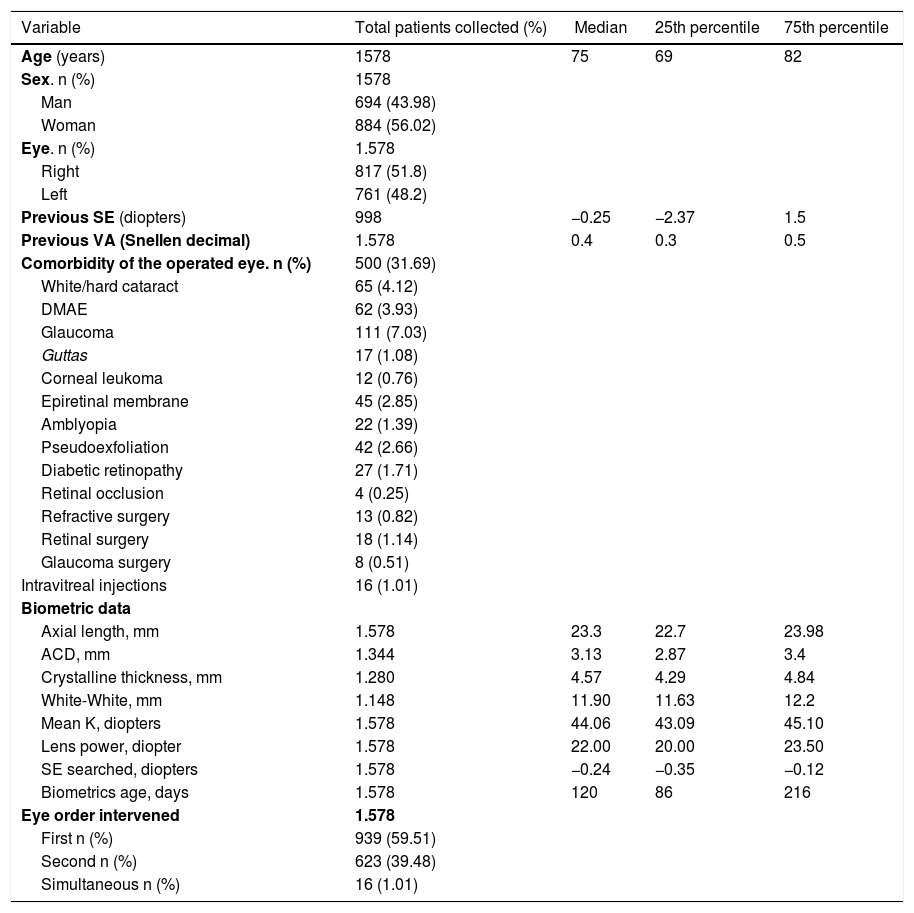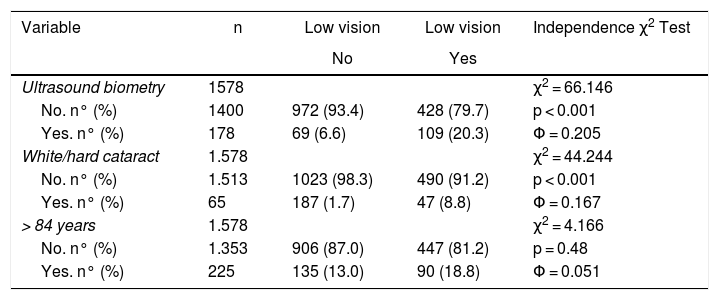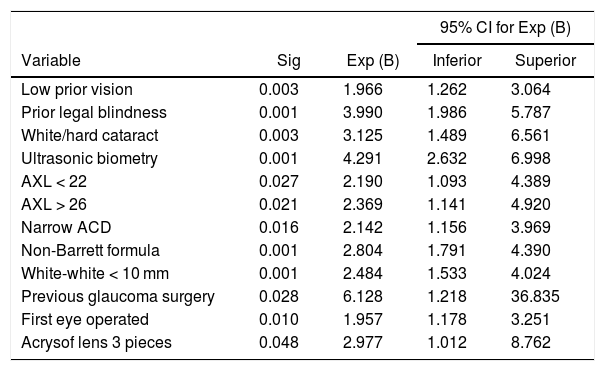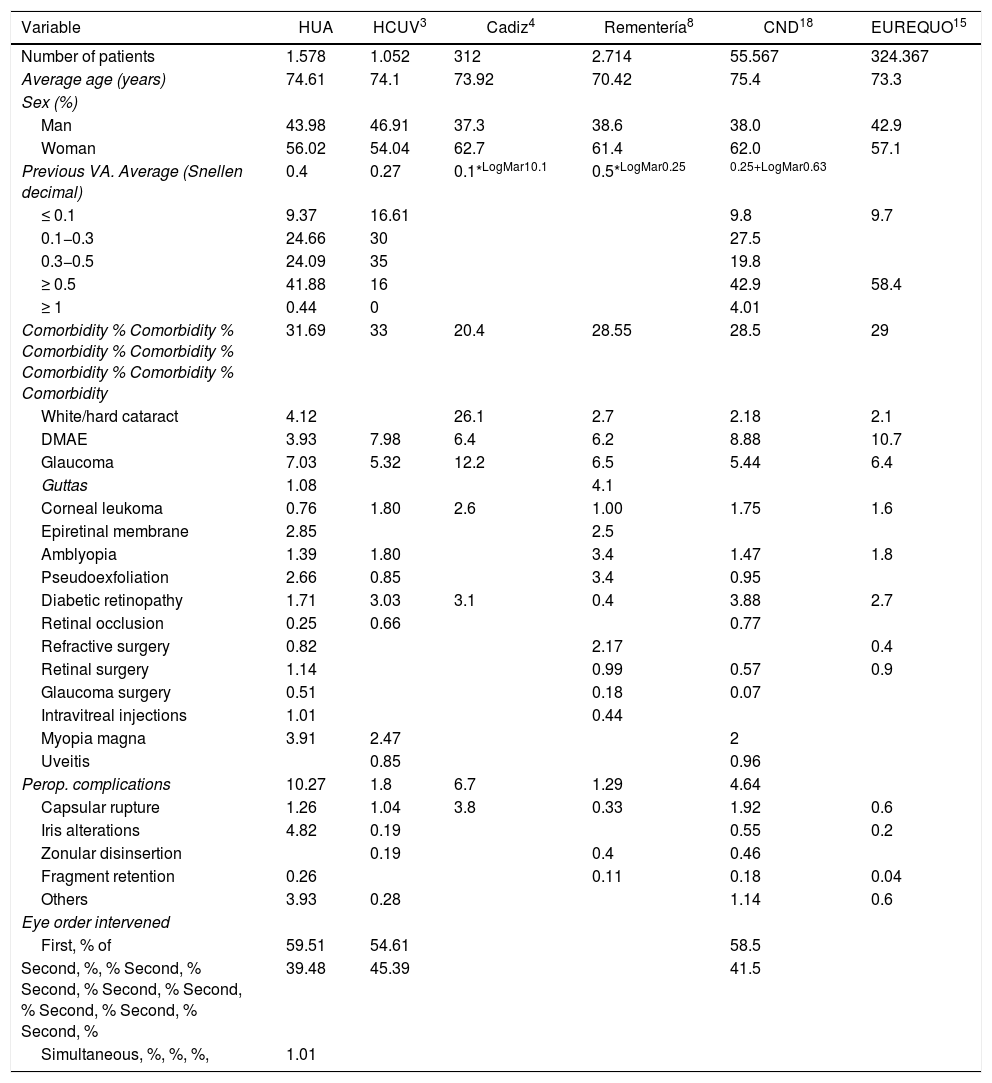To describe the preoperative characteristics of patients undergoing cataract surgery in our hospital, to determine the final visual and refractive results and to determine the preoperative characteristics that conditioned the presence of a residual refractive error (RRE) greater than one diopter.
MethodsRetrospective analysis of cataract surgeries performed at Araba University Hospital between February 2017 and December 2019. Sociodemographic, eye comorbidity, biometric, surgical and post-surgical characteristics were collected.
ResultsA total of 1419 patients and 1578 surgeries were included for analysis. Of these, 9.07% had preoperative legal blindness, 31.69% eye comorbidity and 4.18% had previous surgery. Overall, 95.82% of patients achieved a corrected final visual acuity (VA) ≥ 0.5 Snellen decimal and 63.12% ≥ 1, and 96.70% of patients improved VA after surgery. RRE was between ±0.5 diopters in 77.82% of patients and between ±1 diopter in 94.74%. The most prominent risk factors that conditioned the presence of RRE greater than 1 diopter were the use of ultrasonic contact biometer, a history of glaucoma surgery, the presence of white or hard cataract, and prior legal blindness.
ConclusionsThe visual results of cataract surgery were excellent, with 63.12% of patients obtaining corrected VA ≥ 1 and an RRE of ±1 diopter in 94.74%. Different risk factors influenced the achievement of poor refractive outcomes: preoperative conditions (previous surgeries, white/hard cataract, previous VA) and biometrics.
Describir las características preoperatorias de la población intervenida de cataratas en nuestro hospital, determinar los resultados visuales y refractivos finales y determinar las características previas a la intervención que condicionan la presencia de un error refractivo residual (ERR) mayor de una dioptría.
MétodosEstudio retrospectivo de cirugías de catarata realizadas en el Hospital Universitario Araba, entre febrero de 2017 y diciembre de 2019. Se recogieron características sociodemográficas, de comorbilidad ocular, biométricas, quirúrgicas y postquirúrgicas.
ResultadosSe incluyeron 1.419 pacientes y 1.578 cirugías para su análisis. El 9,07% presentaron ceguera legal preoperatoria, el 31,69% comorbilidad ocular y el 4,18% había sido previamente intervenido. El 95,82% de los pacientes alcanzaron una agudeza visual (AV) final corregida ≥0,5 Snellen decimal y el 63,12% ≥1. El 96,70% de los pacientes mejoraron la agudeza visual (AV) tras la intervención. El ERR estuvo entre ±0,5 dioptrías en el 77,82% de los pacientes y entre ± 1 dioptría en el 94,74%. Los factores de riesgo más destacados que condicionan la presencia de ERR mayor de una dioptría fueron la utilización de biómetro ultrasónico de contacto, el antecedente de cirugía de glaucoma, la presencia de catarata blanca o dura y una AV previa de ceguera legal.
ConclusionesLos resultados visuales de la cirugía de cataratas fueron excelentes, alcanzando el 63,12% de los pacientes una AV corregida ≥1 y quedando un ERR entre ±1 dioptría en el 94,74%. Diferentes factores de riesgo influyen en la consecución de peores resultados refractivos: condiciones preoperatorias (intervención previa, catarata blanca/dura, AV previa) y biométricas.











